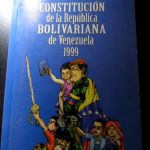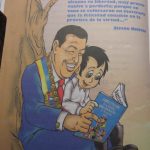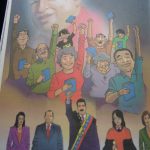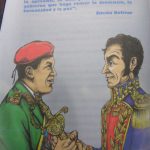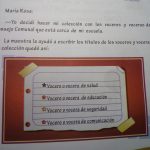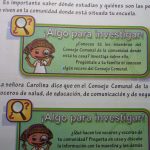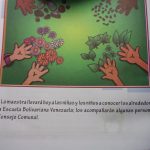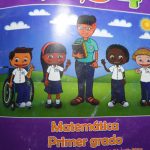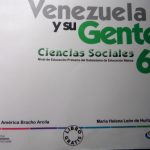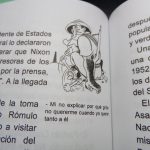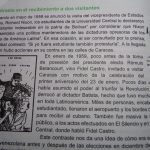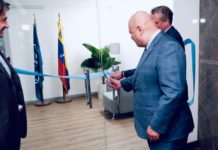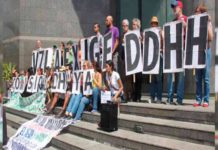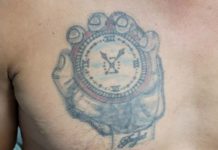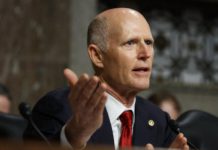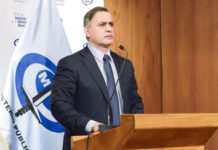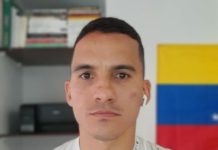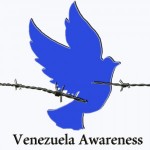
Venezuela Awareness Foundation
Report on Human Rights Practices for political reasons: Venezuela, 2013
Miami, February 13, 2014.- 2013 Was characterized by maintaining the use of Justice to intimidate opponents with manufacturing of crimes to justify a custodial measure of freedom extremely marked in the opposition sector although supporters of the ruling party do not escape the abuse of the Judicial power, since within the list of the political arrests, there were cases of supporters of the ruling party who have believed and advocated the revolutionary project, However, they were imprisoned for claiming their rights or tortured as in the case of Luis Ugas, who denounced the corruption and mafias in the ruling party. There were suspensions of political trials that were near the sentencing phase due to lack of evidence so they need to be started from scratch.
After constant threats by the Venezuelan government that in Venezuela there were “agents of the empire with destabilizing purposes”, the Venezuelan government threats are consumed with the arrest of two Americans. One of them, the filmmaker Timothy Tracy, was subjected to constant psychological torture, humiliation because of his U.S. citizenship and on the last days of his imprisonment he was transferred to one of the most dangerous prisons in Venezuela: El Rodeo where he was subjected to appalling prison conditions.
Political arrests in 2013 came to be registered at 201 and during the year, 190 were benefited with parole, so that by December 31, 2013, the list of political prisoners closed at 11. In December 31st , two political prisoners were freed, Mayor Milton Revilla Soto and Gustavo Tirado. The highest figure of arrests occurred during peaceful post-election protests on the 15 and 16 of April, reaching a total of 173. The protest was criminalized and accompanied by an strong abuse of military and police authorities including incarceration in “cages” closed without windows, military headquarters, constant physical, psychological ill-treatment, humiliated because of their political position as government opponents, hits with closed fists and with military equipment, torture including electric shocks. Before being released, the victims were forced to sign a medical report where they stated that they were in “perfect physical condition”. These victims were sent to the courts charged with falsified crimes and except two, the Hernández brothers, all were sent to trial with a measure of periodic presentation in the court.
We want to emphasize that at the end of the 2013 the dangerous figure of the “disappearance” of citizens who subsequently were “abandoned” with testimony of having been unlawfully detained and tortured by officials from intelligence agencies and under threat was registered, they force them not to make any type of complaint. The latter opens the door to get to something more serious: enforced disappearance, one of the crimes that characterize the hardest dictatorships.
The violations of human rights by political reasons remain in total impunity, concealed by the most senior officials as the Prosecutor General of the Republic, Luisa Ortega Díaz. There is no investigation, prosecution, or conviction against the perpetrators of these inhumane acts either.
The purpose of the human rights violations that seem to be pursued by the Bolivarian revolution in 2013 was to radicalized themselves in power in the year of the physical disappearance of former President Hugo Chávez and in this way, to ensure their permanence in power.
This year we will include the situation of education in Venezuela that is in transit from the transmission of values to the revolutionary indoctrination through school textbooks “Bicentennial Collection” where distortion, manipulation and false facts in Venezuelan history are included. The language is in many cases aggressive, incites hatred, deepens Venezuelan polarization between those who follow the revolutionary project and the opponents, maintains the strong language towards the enemy, the superpower of the U.S. “empire” and enhances values of the Venezuelan guerrillas and the figure of Fidel Castro and the Castro revolution.
Summary of political cases in 2013
Mysterious “disappearances and releases”
In late November, General Ramón Lozada Saavedra, Jesus Delgado and Gustavo Tirado disappeared without a trace, except for Lozada who was intercepted by a heavily armed commando of the Military Intelligence Division in broad daylight in an area of Caracas; he was taken away without ever making contact with the family. In spite of complaints to various authorities as DIM, SEBIN, GAES, CICPC, called by the media, there was no response from the authorities.
Approximately two weeks later, Lozada and Delgado were “released”. Tirado was released on December 31th from Fuerte Tiuna with a benefit of presentation.
The Suspension of Trials
1.-Case Judge Maria Lourdes Afiuni
The trial started in November 2012 against Judge Maria Lourdes Afiuni, was suspended on October 23rd , 2013 because it did not resume within 16 working days when the Public Prosecutor Emilce Ramos, deliberately failed to appear at the court was about to conclude. The evidence exonerated Afiuni and involved as responsible for crime to government and the judiciary officials, which lead us to believe that these were the reasons for the interruption, and even more when the Public Prosecutor Emilce Ramos had several assistant prosecutors and moreover being the Public Ministry unique and indivisible, any prosecutor could appear instead of the citizen Ramos and avoid this unfortunate and shocking interruption of a trial which entered its sentencing phase.
2.-César Medina Gómez
In a trial without evidence against Cesar Medina Gómez, only false lists made at the Ministry of Defense, in September 2013, the trial of Cesar Medina Gomez was suspended because of a “judicial recess”. Medina Gómez is in trial for being part of the group of military man of Plaza Altamira, where everyone was processed and later pardoned by former President Hugo Chavez on December 31st , 2007. However, Medina was ambushed, detained and prosecuted for acts that were previously pardoned.
Detention of U.S. Citizens
1.-Filmmaker Timothy Tracy
After many threats by the Venezuelan government of being victims of spies from the “American empire”, on April 24th the arrest of the American Timothy Tracy was announced. He was accused of being “spy of the Empire” and was charged with Conspiracy, Favoring of material, Use of false documents and Association to commit crimes.
Tracy, who is actually a filmmaker who was filming for a documentary about Venezuela, was confined to the dungeons of the SEBIN and later, on May 29th, moved to one of the most violent prisons in Venezuela known as El Rodeo, where he was isolated, subjected to poor prison conditions, harassed and humiliated because of his nationality and subjected to psychological torture.
Tim Tracy was “expelled” from Venezuela and put on a plane bound for the USA on June 5th.
2.-Reporter Jim Wyss
Another episode of “detention” of a U.S. citizen occurred on Thursday November 7th , 2013 , when the U.S. journalist Jim Wyss , head to the Andes Zone for the Miami Herald , based in the city of Bogotá , Colombia , traveled to Venezuela , specifically to the border town of San Cristobal , in order to make a journalistic investigation on smuggling of goods. The starting point of his journalistic work began at the CORE1 of San Cristobal where , after waiting 4 hours to be received by a senior officer who would provide information , and once Wyss decides not to wait any longer and to leave, he was “verbally” informed he could not do so, beginning in this way his “detention “and transferring to the headquarters of the Directorate General of Military Counterintelligence of Venezuela to be isolated , incommunicado , interrogated for hours without the presence of counsel , they accessed his journalist sources and his working material , photos, phone contacts stored on his cell phone that are the sources of a journalist violating, in this way, his right to confidentiality. It is very striking that during the interrogation Wyss was asked to remove his watch, a common practice in the DCIM to disorient the detainee and with this, weakening his strength, he gives up to the pressures to which it is subjected. Likewise, he was told he could not be touch “not even with rose petal”, a way of letting him know that there was a higher order not to attempt any assault or torture against him.
Jim Wyss is handed over, the following day, to the authorities of the SAIME where he becomes from a “detain” person by the DCIM to a “processed for immigration procedures” and “released” before completing the 48 hours for a person to be brought before a judge and as stated by the law, on Saturday 9th in the afternoon.
Criminalization of the protest in the peaceful post-election protests: April 15th and 16th
The criminalization of the protest rose because of the peaceful demonstrations because of the dubious results of the presidential election on April 14th, 2013.
While the Venezuelan Constitution provides for peaceful protest in Article 68 and that was the response of Venezuelans in different cities of the country on April 15th and 16th to demand a recount of votes because of the dubious election results, this was answered by the Venezuelan government through the police and military who in violation of regulations to dissolved demonstrations, used violence, torture, abuse, beating, humiliating and degrading treatment, and even violation of domicile.
Among the victims were minors and elderly people as well as people who were by chance in the area or who were on the road to a peaceful protest as well as journalists and media that were doing their jobs.
To this we add the testimony of victims who report being imprisoned in inhumane conditions for the sole purpose of increasing the degree of torture they were already suffering prior to his unlawful detention.
The arrests known as 14A were difficult to quantify, so we can only give an approximated figure by the stories of the victims, lawyers and journalists, as the official source withheld the total figure of arrests.
Moreover, the Venezuelan courts that heard these cases, admitted the charges brought by the public prosecutor, charged the demonstrators who declared themselves innocent, with false charges that also were “inflated”, ie, a victim could easily end up charged with 6 counts that he did not commit. The crimes charged to the demonstrators were alleged “vandalism” and “incitement to violence” of the protesters.
In this way the government makes sure they have under conditions of “probation” while the trial phase arrives, their victims keeping them under their total control, preventing them from protesting again and as well as returning them to jail when it is of the interest of the Bolivarian Revolution.
Besides the threat of returning to jail, the victims must deal with the process in the courts where the causes are still open and in many cases, the trials paralyzed, and the emotional scars that they drag for having being victims of physical, psychological torture, and constant degrading treatment by the authorities and the executive branch in the media.
Of the group arrested on April 14th, 15th and 16th, only two remain behind the political bars, the young brothers Rodrigo José Hernández Díaz y José Carlos Hernández from the “Cumanacoa” case.
Detentions under the “economic war or usury crimes”
In November and during a government policy against usury and speculation, they adopted measures outside of due process when officials from the INDEPABIS, SUNDECOP and SENIAT when inspecting businesses and finding overcharges, called officials from the SEBIN to raid the premises without a court warrant and proceed to the arrest of employees without a felony warrant, and without committing a flagrant offense because there was no connection with the alleged overpricing.
It is estimated that 54 people were arrested for usury crimes.
Cases of political prisoners who remain in political prisons
Case 11A
“The ruling of the judge “lawyer” ROSA DE FREITAS VIEIRA, of the 1st Court of execution of the Aragua State dated March 4th 2013 in which:” “DENIES THE GRANTING OF THE ALTERNATIVES FORMULAS FOR SERVING OF THE PENALTY which could benefit the convicts (BOLIVAR ERASMO JOSE, MOLINA CERRADA LUIS ENRIQUE, ROVAIN HECTOR JOSE, PEREZ SALAZAR ARUBE JOSE and HURTADO MARCO JAVIER, …) “for them being considered VIOLATORS OF THE HUMAN RIGHTS, And thus is decided.”
The benefits that are excluded from the processes of “crimes against humanity” are THE PARDON and THE AMNESTY, because these are what constitutes an act of impunity, so the judge simply refuses to provide alternative formulas of the serving of the sentence in favor of the five metropolitan policemen in order to show the government what she is capable so they could keep her as a judge. In the case of the metropolitan policemen, alternative ways of serving the sentence does not imply impunity.
Iván Simonovis
During 2013 the health of Simonovis continued to deteriorate, despite the delicacy of his health, he was never granted a humanitarian measure.
The judges that have heard the request, as in similar cases, have used delaying tactics such as repeated medical examinations, to not grant the benefit.
Although Simonovis has had life-threatening health problems such as the diagnosis in the month of July of the gangrenous gallbladder, perforated and with 200 cc of pus and underwent surgery and returned to jail, there are only delays by the authorities risking the integrity of this political prisoner besides of the irreparable harm to his health.
Case Ugas.
Luis Ugas, human rights activist and founder of FUNGAPDEHCA, nonprofit foundation whose objective is the promotion and protection of the human, political, economical, social and cultural rights; has been detained since March 19th, 2013 for having denounced corruption and mafias within the revolutionary process. Despite being openly and actively linked to left and revolutionary movements, Ugas Escobar is now a victim of those he supported in the recent past.
Luis Ugas claims to have been tortured when he was hung by his wrists with handcuffs and b savagely beaten until exhaustion, torture that were not posted in his file despite his insistence and showing physical damage. Ugas has health problems that one time required a transfer to a public health center, and it was there that the doctor who had the opportunity check him, recommended his operation, however to the date they have only given him drugs to calm his pain, but they have not made the respective tests, let alone they have done the medical operations and respective treatments.
Case Cumanacoa
On Monday, April 15th 2013 at 8.00 pm in Cumanacoa, the brothers Rodrigo José Hernández Díaz and José Carlos Hernández Díaz were protesting by banging on pots and pans the election results with a group of neighbors in the community where they lived, which was protected by a gate that was closed, when a group of motorcycle drivers belonging to the ruling party arrived and began throwing rocks, bottles, homemade bombs, rockets across the ground, into the community; scattering the people who ran towards the end of the neighborhood to protect their lives and tried to remove their vehicles from the street and protect them in their garages. Because of the attacks the state police was called via phone but they did not come immediately.
Half an hour later a commission from the scientific police came stating that there was a deceased person in the community hospital by firearm and that the shots had come from the community; although no one was armed.
On April 16th several neighbors who were protesting appeared to testify, among these, the brothers Rodrigo Jose and Jose Carlos Hernández which ratified that they were not armed, no one had a firearm, however, on Thursday the 18th, when brought back to CICPC Rodrigo José and José Carlos were retained at 2:00 pm, at 11:30 pm they were informed that they would be arrested without being subject to any charge or the existence of a warrant for their arrest, until that moment.
On April 19th during the National TV address for the Inauguration of the President of the Republic, Nicolas Maduro, said and showed pictures of them, pointing them out as responsible for the death of the citizen HENDER BASTARD.
After being charged directly by Nicolás Maduro, as is usual in these cases, the Seventh Public Prosecutor Mariuska Gabaldon, charged them with the crime of Murder and assault of Hender Bastard (deceased) and Moses Idrogo and Alvaro Bastard (injured) and asked for a Preventive Imprisonment measure to be issued against them. This was agreed by the judge and she ordered the detention of the prisoners at the Cumana detention center.
The trial hearings began on November 13th and another one on December 12th. So far the 6 witnesses, residents of the village have said that the Hernandez brothers were with them at all times confirming that they have nothing to do with the crime of which they are accused.
Venezuelan education as a tool of indoctrination
After analyzing Venezuelan books from the Bicentennial Collection distributed free by the Venezuelan government as educational textbooks, as well as the Illustrated Constitution, we must warn that these are methods of indoctrination through education.
The Patria Plan already imposes that the textbooks of the Bicentennial Collection are the only ones distributed by the Venezuelan government excluding alternative textbooks, so that indoctrination is assured to the Venezuelan students through textbooks from the Bicentennial Collection which the school principals obligate the teachers to use them.
The Patria Plan establishes as its purpose “to continue building the Bolivarian Socialism of the XXI century in Venezuela as an alternative to the wild model of capitalism and thereby ensure the ‘greatest amount of social security, the greater amount of political stability and the greatest amount of happiness’ for our people”. Socialism is not contemplated in the Venezuelan constitution; however, one form of implementing it in Venezuela is through indoctrination by school textbooks.
1.-The Illustrated Constitution
In September President Nicolas Maduro announced the free distribution of the Illustrated Constitution for the 2013-2014 school year.
This text with illustrations of Simon Bolivar and former President Hugo Chavez is a constant; however, what is alarming is the misrepresentation that is transmitted in the illustrations and being taught in the schools already. One of the most serious, if not the most serious, is the one that teaches “Simon Bolivar as the precursor of the independence and the liberator is Hugo Chavez.” This big lie ever told, fake the Venezuelan history about the Liberator Simon Bolivar.
This also shows artwork of Hugo Chavez shown as a teacher who teaches the child Simon Bolivar, or another image where Simon Bolivar surrenders his Liberator sword to Hugo Chavez in military dress, who receives it to liberate the Americas.
The figure of Hugo Chavez is present in almost all the illustrations in some cases as a mystical figure, and his successor, President Nicolas Maduro.
Demonized figures representing the “empire” (USA) who has his eyes on Venezuela and the citizens defending the Venezuelan territory are shown.
People in these illustrations wear many “red shirts” as a sign of being followers of the revolutionary process, works of revolution as the “Mission House” is also illustrated, and in one of the pages is printed the political slogan “today we have a homeland” of the ruling party of the United Socialist Party of Venezuela with the illustration of Chavez holding his crucifix and in military dress.
The presentation of the Constitution by Nicholas Maduro is political, revolutionary, and with and indoctrinating language and praising Hugo Chavez as the “eternal commander”.
2.-Textbooks from the Bicentennial Collection or political propaganda textbooks
The study of educational textbooks of the Bicentennial Collection shows a minimization and lack of references to the works of democratic governments, which are mentioned in a brief form (quarter page or half page) or omitted, in addition to begin preparing the student for the arrival of the Bolivarian revolution which magnifies itself, is justified in its actions, the figure of former President Hugo Chavez is projected as a messiah, a savior not only of Venezuela but the hemisphere, narrative that reaches a good portion of each textbook. These textbooks are a political propaganda for the revolutionary process that adding to the incorrect data or the imbalance by making references to the history of Venezuela in an extremely short form compared to the extensive and detailed information on the revolutionary process pretends to erase the true history. The Bicentennial Collection deftly handles the indoctrinating language according to the student’s age, being useful for courses as first grade and quite straightforward and with terms in some way aggressive to convince and sow the revolutionary seed in textbooks for fifth grade, sixth grade and high school.
There are many references to the “social missions” Barrio Adentro, Robinson I and II, Ribas, Sucre, Vuelvan Caras, Miracle … in other words, revolutionary propaganda.
The textbooks keep the language that incites hatred and deepening of the polarization in Venezuela, “opponents of President Chavez,” “acts of sabotage”, “foreign power” as well as references against the United States as “the empire” which is repudiated and hated by Venezuelans, and on the contrary, the Venezuelan admiration for Fidel Castro and the Cuban Revolution.
3.-The first grade book “Contemos…. 1, 2, 3 y 4”
The first grade book “Contemos …. 1, 2, 3 y 4” which does not teach, indoctrinates children in the Communal Power, something that does not exist in the Constitution and something that the revolution brags about, “we are going to become a communal State”.
“Contemos …. 1, 2, 3 y 4” educates children in the communal system, its operation and thus introduce the Communal State and the New Geometry of Power imposed by the Socialist state which eliminates the competencies to the Governors, Mayors, Legislative and Municipal Councils. With this, the territorial political system of Venezuela is dismantled, ie, decentralization in a clear violation of the Constitution.
The textbook explains how the commune works and through exercises and tasks, involves the children in The Communal State and the Patria Plan, which was adopted in an unconstitutional way.
4.-Venezuela y su Gente. 6th grade Social Studies.
Venezuela y su Gente is one of the textbooks where it exits misrepresentation of the information. This text contains a very questionable treatment, a very aggressive language, and perverse, they omitted key facts to understand current history. It is questionable the omission of many details denying a student the training so he can develop critical thinking.
Sectors that during the Bolivarian revolution have been exposed to public ridicule are disqualified, while they raise Hugo Chavez to the rank of national savior, Liberator and messiah.
One example is the reference in the text to the oil strike “in January 2002.” The International Labor Organization, ILO, described it as the exercise of a human right and declared it “legal” and spoke stating that, in accordance with international labor standards and the Venezuelan legal order, the “civic strike” led out by workers of the Venezuelan oil company represented a manifestation of the right to strike. The actions of the government was to act indiscriminately and disproportionately punishing every worker who has participated or had a prominent role in this oil strike and laying off approximately 20,000 workers in the oil industry.
The text uses phrases like “… when in January 2002 the opponents of President Chávez promoted an oil strike, there were acts of sabotage….”; “after the oil sabotage of 2001, there was a restructuration of PDVSA”
As it can be read, it is an historical manipulation.
Another perverse mention refers to the events of April 11th, 2002 when the peaceful march was headed to Miraflores to demand the resignation of President Hugo Chavez. The history and well-founded studies recorded 19 deaths: 16 from the opposition and 3 from the ruling party. The text reads: “Most of the dead were Chavez supporters”.
List of Venezuelan political prisoners until December 31st 2013
1. – Agent (PM) Erasmo Bolívar, Illegally retained on April 21st 2003 (Ramo Verde).
2. – Dtgdo (PM) Luís Molina Cerrada, Illegally retained on April 21st 2003 (Ramo Verde).
3. – C/1ro (PM) Arube Pérez Salazar, Illegally retained on April 21st 2003 (Ramo Verde).
4. – Sub.Com. (PM) Marco Hurtado, Illegally retained on April 21st 2003 (Ramo Verde).
5.- Insp. Jefe (PM) Héctor Rovain, Illegally retained on April 21st 2003 (Ramo Verde).
2004
6. – Iván Simonovis, Illegally retained on November 22nd 2004 (SEBIN, former DISIP).
2011
7. – Carlos Zorrilla, Illegally retained on April 25th 2011 (Penitenciary of Barinas)
2013
8. – Rodrigo Hernández, Illegally retained on April 18th 2013 (Judicial Penal of Cumaná,Sucre) Moved to the Jail of Carúpano on January 21st , 2014.
9. – José Hernández, Illegally retained on April 18th 2013 (Judicial Penal of Cumaná,Sucre) Moved to the Jail of Carúpano on January 21st 2014.
11. – Luis Escobar Ugas, Illegally retained on March 19th 2013 (Polipeñalver Jail, Puerto Píritu Anzoategui)
Constitución Ilustrada
Contemos…1,2,3 y 4. Matemática Primer Grado
Venezuela y su Gente. Ciencias Sociales 6 grado


